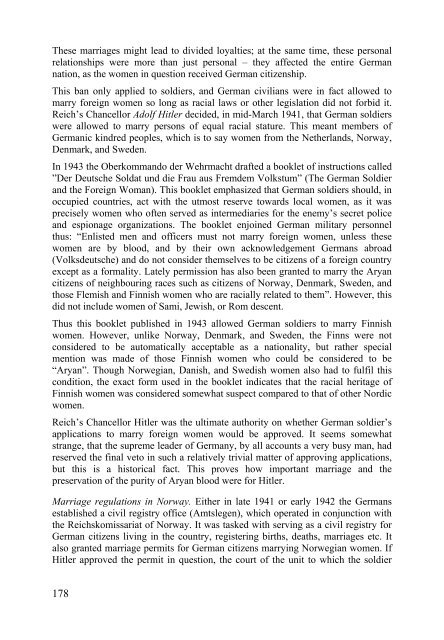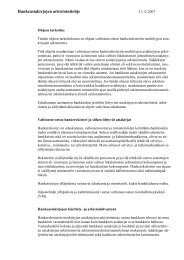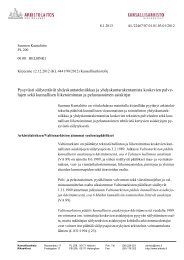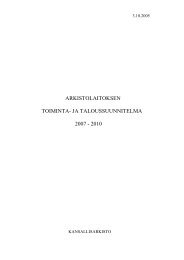Saksalaisten sotilaiden lapset. Ulkomaalaisten sotilaiden lapset ...
Saksalaisten sotilaiden lapset. Ulkomaalaisten sotilaiden lapset ...
Saksalaisten sotilaiden lapset. Ulkomaalaisten sotilaiden lapset ...
You also want an ePaper? Increase the reach of your titles
YUMPU automatically turns print PDFs into web optimized ePapers that Google loves.
These marriages might lead to divided loyalties; at the same time, these personal<br />
relationships were more than just personal – they affected the entire German<br />
nation, as the women in question received German citizenship.<br />
This ban only applied to soldiers, and German civilians were in fact allowed to<br />
marry foreign women so long as racial laws or other legislation did not forbid it.<br />
Reich’s Chancellor Adolf Hitler decided, in mid-March 1941, that German soldiers<br />
were allowed to marry persons of equal racial stature. This meant members of<br />
Germanic kindred peoples, which is to say women from the Netherlands, Norway,<br />
Denmark, and Sweden.<br />
In 1943 the Oberkommando der Wehrmacht drafted a booklet of instructions called<br />
”Der Deutsche Soldat und die Frau aus Fremdem Volkstum” (The German Soldier<br />
and the Foreign Woman). This booklet emphasized that German soldiers should, in<br />
occupied countries, act with the utmost reserve towards local women, as it was<br />
precisely women who often served as intermediaries for the enemy’s secret police<br />
and espionage organizations. The booklet enjoined German military personnel<br />
thus: “Enlisted men and officers must not marry foreign women, unless these<br />
women are by blood, and by their own acknowledgement Germans abroad<br />
(Volksdeutsche) and do not consider themselves to be citizens of a foreign country<br />
except as a formality. Lately permission has also been granted to marry the Aryan<br />
citizens of neighbouring races such as citizens of Norway, Denmark, Sweden, and<br />
those Flemish and Finnish women who are racially related to them”. However, this<br />
did not include women of Sami, Jewish, or Rom descent.<br />
Thus this booklet published in 1943 allowed German soldiers to marry Finnish<br />
women. However, unlike Norway, Denmark, and Sweden, the Finns were not<br />
considered to be automatically acceptable as a nationality, but rather special<br />
mention was made of those Finnish women who could be considered to be<br />
“Aryan”. Though Norwegian, Danish, and Swedish women also had to fulfil this<br />
condition, the exact form used in the booklet indicates that the racial heritage of<br />
Finnish women was considered somewhat suspect compared to that of other Nordic<br />
women.<br />
Reich’s Chancellor Hitler was the ultimate authority on whether German soldier’s<br />
applications to marry foreign women would be approved. It seems somewhat<br />
strange, that the supreme leader of Germany, by all accounts a very busy man, had<br />
reserved the final veto in such a relatively trivial matter of approving applications,<br />
but this is a historical fact. This proves how important marriage and the<br />
preservation of the purity of Aryan blood were for Hitler.<br />
Marriage regulations in Norway. Either in late 1941 or early 1942 the Germans<br />
established a civil registry office (Amtslegen), which operated in conjunction with<br />
the Reichskomissariat of Norway. It was tasked with serving as a civil registry for<br />
German citizens living in the country, registering births, deaths, marriages etc. It<br />
also granted marriage permits for German citizens marrying Norwegian women. If<br />
Hitler approved the permit in question, the court of the unit to which the soldier<br />
178

















